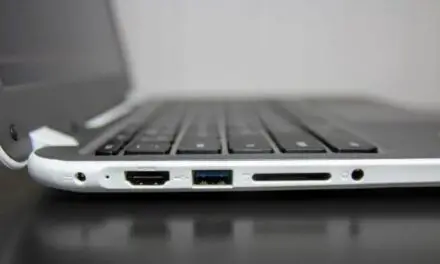Laptops are the ultimate in portable computers.
We can carry them around with us anywhere we go and access our work, media, or school assignments from coffee shops, libraries, and even park benches.
But does this unplugged portability come at a cost of performance?
Table of Contents
Do Laptops Work Better When Plugged In?
Most laptops – especially gaming laptops – do work better when plugged in because their components are too powerful for the battery to run them at full power. The CPUs and GPUs on most laptops are configured to be underclocked by default while they are on battery. This is done to extend the battery life on regular laptops and to prevent batteries from being damaged on high-performance laptops.
Underclocking the CPU and GPU while on battery will cause your laptop to run cooler and slower, and this will help to extend the life of the battery.
Once you plug your laptop back in it will no longer be restricted and you may notice that it performs better.
Can I Get My Laptop To Work Better When On Battery?

If you don’t have a high-performance gaming laptop then you should be able to switch it to performance mode from within the power settings,
This should increase performance while it’s on battery.
However, if your laptop is running a high-performance GPU, the battery may not contain enough power to run it under heavy load so there will be no option for performance mode while it’s on battery.
The battery also has to run the CPU, screen, disk, and any USB peripherals that may be connected.
This type of demand can cause your battery to discharge much faster than it is rated for and this can reduce its overall lifespan or even cause damage to it in the short term.
You Might Also Like: Are Chromebooks Better Than Laptops? (All You Need To Know)
Should I Just Leave My Laptop Plugged In All The Time?
There used to be a time when it was unwise and even dangerous to keep your laptop plugged in all the time, but today, most laptops use lithium-polymer or lithium-ion batteries that won’t overcharge.
However, for the health of your battery, you should avoid leaving it plugged in permanently.
To get the longest life from your battery, you should try to keep its charge between 30% and 90% most of the time.
When it dips to below 30%, charge it back up but unplug it when it gets to over 90%.
Keeping your laptop plugged in and maintaining a 100% charge will cause it to degrade faster.
Furthermore, charging your laptop continuously generates more heat, which further degrades your battery’s capacity and other components within your device.
Do Laptops Always Work Better When Plugged In?
No, a laptop may not work better when plugged in if it is prone to overheating from excessive dust, degraded thermal paste, clogged vents or fans, etc.
A laptop will naturally generate more heat when it is being charged and this heat on top of pre-existing heat issues can cause your laptop to slow down.
Removing the battery from your laptop – if it’s removable – may help to reduce heat while it’s plugged in.
You could also give your laptop a good clean-out with a vacuum that has a hose and a can of compressed air.
Vacuum out the exhaust vents and use the compressed air on the intake sides of the vents and around the keycaps.
In conclusion, laptops usually work better when plugged in because they are usually configured to be underclocked to run at a reduced performance while on battery.
However, if your laptop is not being cooled efficiently, it may work better when unplugged and you should consider cleaning it out to remove any dust that might be causing overheating.



